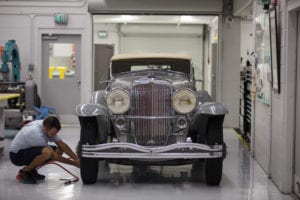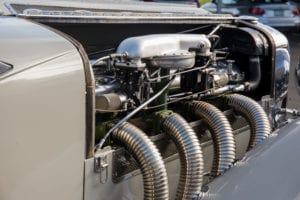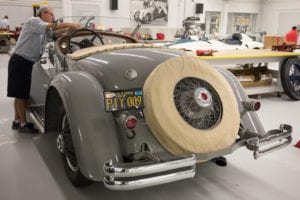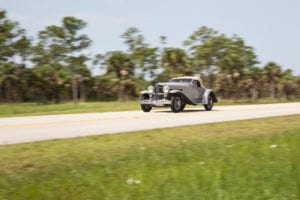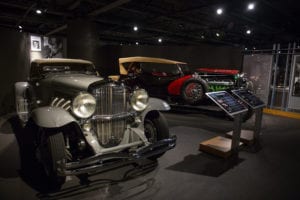In Selling His Duesenberg SSJ, Miles Collier Will Launch Revs 2.0
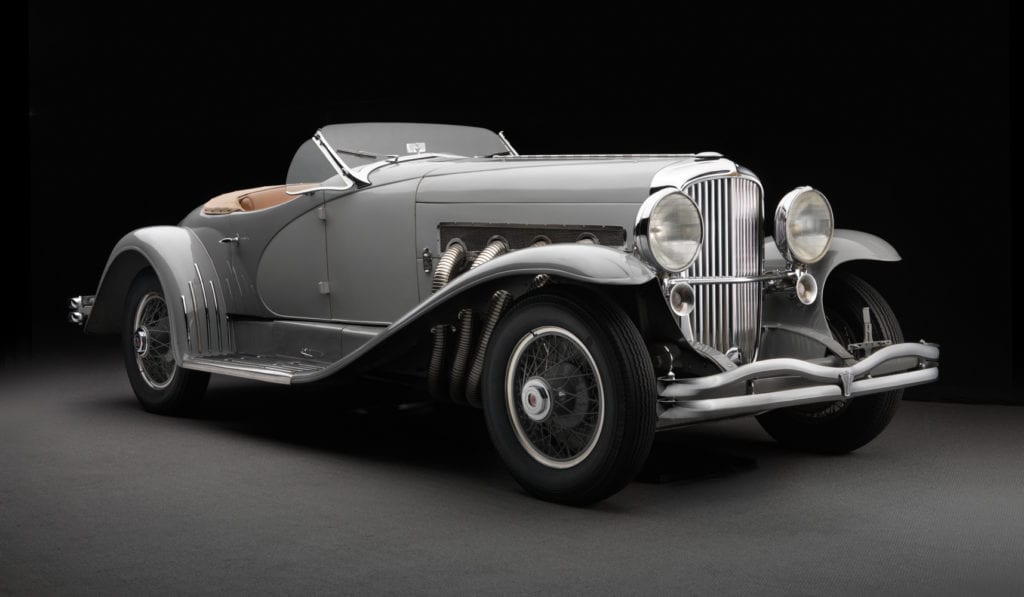
It was an exceedingly difficult decision, acknowledges Miles C. Collier. And how could it have been otherwise?
Selling the 1935 Duesenberg SSJ from the Collier Collections housed at Revs Institute in Naples, FL means parting with an iconic car he has owned for 32 years. Its first owner was actor Gary Cooper. With its supercharged, multi-valve, dual-overhead cam, 400 horsepower engine, the SSJ is both a beauty and a beast.
The car will be offered at the Gooding Auction at the Pebble Beach Concours d’Elegance, which take place on Aug. 24 and 25. Also, at Pebble Beach this year, Sotheby’s will auction a 1964 250 Ferrari GTO; Bloomberg News recently reported a potential price tag of $45 million or more. (A 1962 Ferrari GTO just fetched close to $80 million in a private sale.) Thus this year’s Pebble Beach auction scene will be high on glamor and drama.
The big question about the SSJ sale is why. Miles Collier rarely sells cars from his personal collections of about 115 vehicles. At age 71 he recently was named the world’s No. 1 car collector by The Key, a publication of the Lichtenstein-based (really) Classic Car Trust. Revs also recently was touted as America’s best car museum by Road and Track.
Nothing would be easier than for Collier to engage his personal parking brake and keep Revs just as it is: a notable museum, an extensive automotive library with publications in English, French, German and Italian, and a digital photo archive with some half a million historic-car images.
But instead of the brake, Collier is hitting the accelerator. He wants Revs, for which he began laying the groundwork nearly 30 years ago, to evolve beyond a museum and archive to offer seminars, fellowships, study grants and other programs. His goal: to “take the Revs mission out to the world,” he says, to broaden understanding of the automobile’s sweeping impact on the 20th Century at a time when electric, connected and driverless cars promise another sea-change in the 21st.
“We plan to educate, energize and enlist car lovers,” he says, “men and women, in discovering the world of the automobile past, present and future.” Among the new initiatives to fund this mission are a nationwide chain of collector-car storage garages where enthusiasts can park and care for their prized possessions, a new online magazine celebrating great automobiles — past, present and future — and the people and events that define car-culture and lifestyle, and other businesses whose profits will fund the non-profit Revs Institute’s various programs. Collier’s wife Parker is driving (pun intended) some of the new business initiatives.
In short, selling the Duesenberg SSJ will help provide seed money for Revs 2.0. “Revs wants to drive the recognition of the automobile as not only one of the world’s greatest social change agents,” Collier says, “but also one of the highest expressions of all that is great in the human mind and spirit.”
All this reflects a family legacy steeped in both risk-taking and in automobiles. Collier’s grandfather, Barron Gift Collier, made a fortune in the advertising business in New York. He then plowed money into developing Southwest Florida in the 1920s and 1930s, before the area’s chief ambient occupants shifted from alligators and snakes to golf carts and geriatrics. Collier’s father and uncle — founders of the Sports Car Club of America — were among the first Americans to race at LeMans, piloting cars for the late Briggs Cunningham.
Miles Collier bought Cunningham’s car collection in 1986. Those cars now form about 40% of the 115 cars in his personal collections at Revs. The Duesenberg SSJ was one of the Cunningham cars that Collier acquired. He loved it.
“I have taken the SSJ to concours from Pebble Beach to Meadowbrook Hall (now renamed Concours of America) and Hilton Head, to name just a few,” he recalls. He also took it on Duesenberg road tours, where the car’s in-line eight-cylinder engine proved its mettle.
Collier explains: “With the SSJ, we’d wait at least 30 minutes after all the other Duesenbergs had departed and then drive easily to lunch where we’d arrive 30 minutes before anyone else. The SSJ is just crazy fast. It’s an American classic car with the performance of a European sports racing car.“
Only two SSJs were ever built. One can picture Gary Cooper cruising the Hollywood Hills in his, while Clark Gable roamed the roads in the other one. After “Coop” got his car, the story goes, Gable talked Duesenberg into loaning him the other one in a publicity push to revive the company’s fading fortunes. (It folded in 1937). The car Gable drove is now owned by a collector in Ohio.
Collier’s car is unrestored and well-preserved, which is a big value-driver in today’s classic-car market. Briggs Cunningham had cared for it well, and had the engine souped up a bit in the 1950s, to boot. The car’s rarity, plethora of power, Hollywood glamor and pristine “unrestoredness” provide a rare combination. “It’s a hot-rod Duesenberg with great provenance,” says classic-car expert and author Ken Gross. “For the discriminating collector this has to be one of the top Duesenbergs you could possibly own.”
Meanwhile, Revs will continue to house Collier’s Duesenberg 1930 Model J Phaeton LeBaron and his 1933 “Fred Frame” Sprint Car with its Duesenberg “sidewinder” supercharged engine. Revs also is getting two additional cars for display: a recently donated 1917 Detroit Electric, an early battery-powered car; and a rare 1934 Chrysler CV Airflow Coupe, recently purchased by Revs, which pointed the way to streamlining as the future of automotive design.
And the SSJ, after it finds a new owner, eventually will have a continued presence at Revs. Images and data-specifications of the car are being captured for a virtual-reality display.
“Living collections must be dynamic if they are to attain greatness,” Collier explains. “They have to be added to, pared down and reassessed. Such changing scope keeps thinking fresh and creates excitement among collectors, visitors, and collection-management professionals.”
